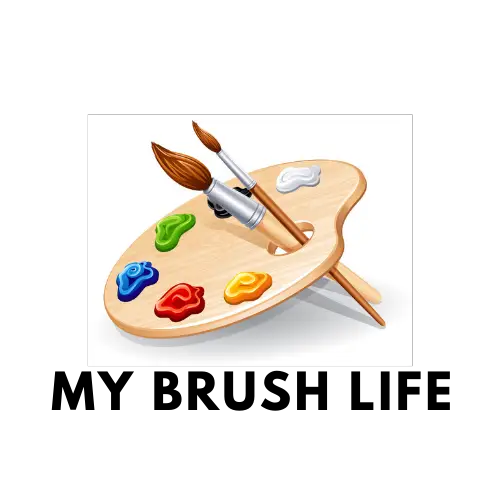Welcome to the world of oil painting! You’ve got your paints, brushes, and canvas, but there’s one more thing you need: an easel. But not just any easel, the right easel. Let’s dive into why this is so important and what you can expect from this guide.
- Importance of choosing the right easel
- Overview of the article
So, buckle up, artists! It’s time to dive into the world of easels and find the perfect one for your artistic endeavors. Let’s get started!
Understanding the Art of Painting
Painting is a wonderful way to express your creativity and emotions. It’s like a journey where your brush dances on the canvas, creating a beautiful piece of art. But, have you ever wondered how an easel can make this journey even more enjoyable? Let’s dive in and explore!
Role of Easels in Painting
An easel is not just a stand to hold your canvas; it’s a tool that can enhance your painting experience in many ways. Let’s see how!
- How easels enhance the painting experience
- Case study: Professional artists and their easel preferences
In conclusion, an easel plays a significant role in enhancing the painting experience. It’s not just a tool, but a companion that supports you in your artistic journey. So, next time you paint, don’t forget to use an easel and see the difference it makes!
Types of Easels for Painting
Hey there, budding artists! Let’s dive into the exciting world of easels. These are the stands that hold your canvas while you create your masterpiece. But did you know there are different types of easels for painting? Let’s explore them together.
- A-Frame Easels
- H-Frame Easels
- Single-Mast Easels
- Tabletop Easels
- Plein Air Easels
So there you have it, folks! Five different types of easels for all your painting needs. Remember, the right easel can make a big difference in your painting experience. So choose wisely and happy painting!
Choosing the Right Easel
When it comes to painting, having the right easel can make a world of difference. It’s like your trusty sidekick, always there to support you (and your canvas) throughout your artistic journey. But how do you choose the right one? Here are some factors to consider:
Factors to Consider
- Space and Size
- Material and Durability
- Adjustability and Versatility
- Price and Quality
Choosing the right easel is a personal decision. It’s about finding the one that fits your style, your space, and your budget. So take your time, do your research, and happy painting!
Art Easel Buying Guide
When it comes to painting, having the right tools can make a world of difference. One of the most important tools for any artist is an easel. But with so many options out there, how do you choose the right one? That’s where we come in! In this guide, we’ll be reviewing the best easels for painting and discussing the pros and cons of each one. So, let’s dive in!
Best Easels for Painting
There are many different types of easels available, each with their own unique features. Here are some of the top-rated easels for painting:
- Review of top-rated easels
- Pros and cons of each easel
Choosing the right easel depends on your specific needs and preferences. Consider the size of your workspace, the size of your canvases, and how portable you need your easel to be. Happy painting!
How to Choose an Easel
Choosing an easel is like choosing a best friend for your art journey. It’s a decision that can greatly impact your painting experience. But don’t worry, we’re here to help you make the right choice. Let’s dive into some practical tips and advice!
Practical Tips and Advice
Here are some key points to consider when choosing your easel:
- Understanding your painting style and needs: Before you start looking for an easel, it’s important to understand your painting style and needs. Do you prefer to paint large or small canvases? Do you like to stand or sit while painting? Answering these questions can help you determine what type of easel will best suit your needs. For example, if you like to paint large canvases, you might want to consider a studio easel.
- Trying out different easels before buying: Just like you wouldn’t buy a pair of shoes without trying them on, you shouldn’t buy an easel without testing it out first. Visit local art supply stores or art schools and try out different easels. See how they feel, how they adjust, and how stable they are. This hands-on experience can give you a better idea of what to look for in an easel.
- Key takeaways for easel selection: Remember, the best easel for you is one that fits your painting style and needs, is within your budget, and feels comfortable to use. Don’t rush the decision. Take your time, do your research, and try out different easels before making a final decision.
Choosing an easel is a personal decision, and what works for one artist may not work for another. But with these tips in mind, you’ll be well on your way to finding the perfect easel for your artistic journey. Happy painting!
Easel for Artists: Professional Painting Easel Selection
Choosing the right easel can make a world of difference in your oil painting journey. It’s not just about holding your canvas – it’s about comfort, convenience, and even creativity. But how do you know which easel is the right one for you? Let’s take a look at what some professional artists have to say.
Case Study: Professional Artists and Their Easel Choices
When it comes to easels, every artist has their own preference. Some prefer the traditional A-frame, while others swear by the H-frame. Let’s explore some insights from professional artists and see how the right easel can enhance your artistic journey.
- Insights from professional artists
- How the right easel can enhance your artistic journey
In conclusion, the right easel can enhance your artistic journey in many ways. It’s worth taking the time to explore different options and find the one that suits you best. Remember, the best easel is the one that makes you feel comfortable and inspired to create.
Conclusion: Your Artistic Journey Begins with the Right Easel
As we wrap up our exploration into the world of easels, let’s take a moment to reflect on what we’ve learned and how it can help you on your artistic journey.
- Recap of the Easel Selection Guide
- Final Words of Encouragement and Advice
Remember, the journey of a thousand miles begins with a single step, or in this case, a single brush stroke. Happy painting!


















